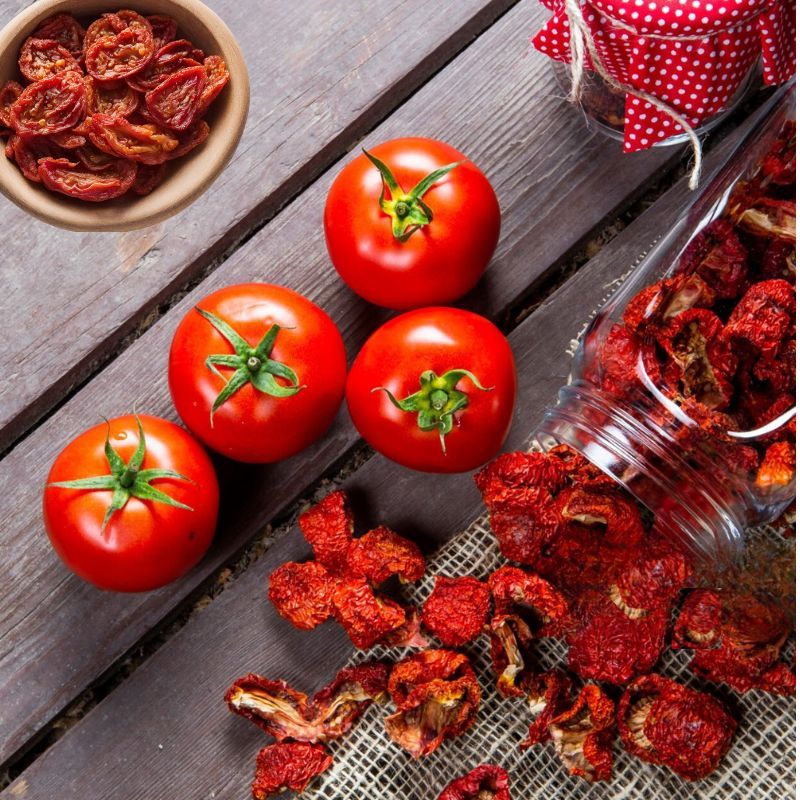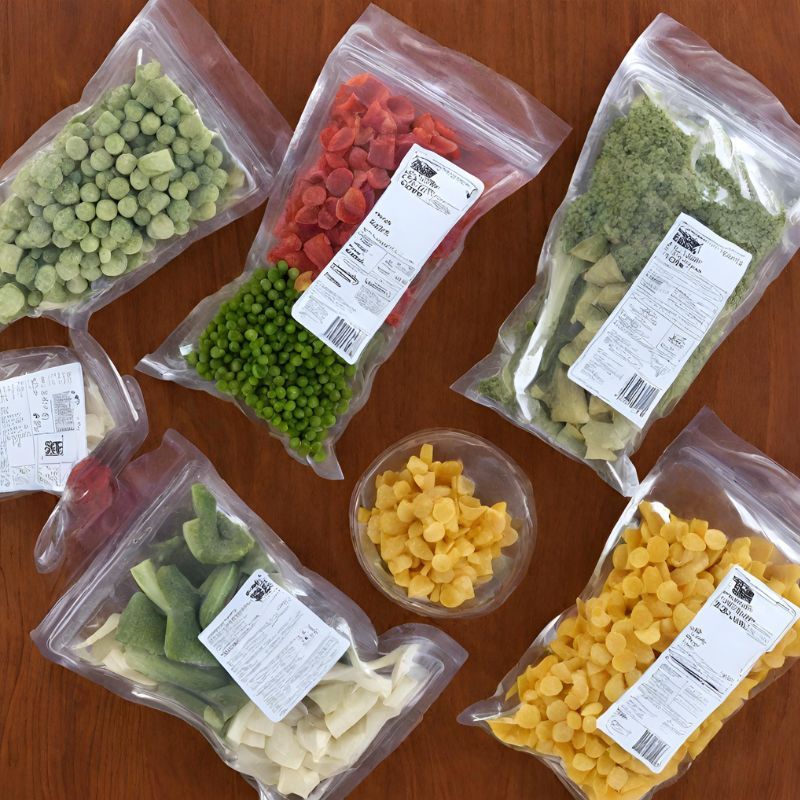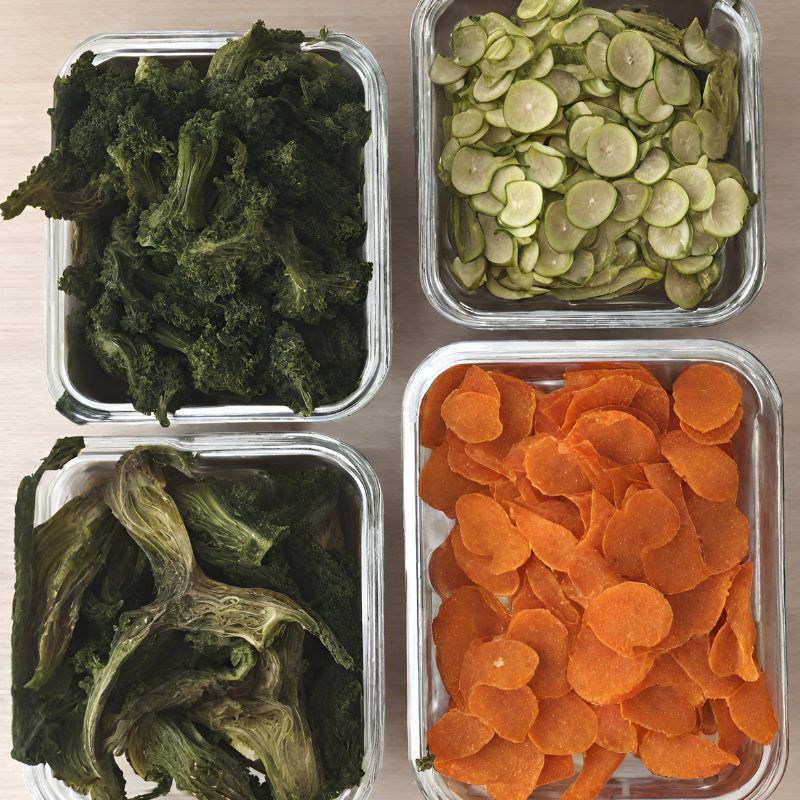
Key Takeaways
Freeze-dried foods offer excellent shelf life and preserve nutritional value well, ideal for long-term survival planning.
Dehydrated foods are more cost-effective and take up less space, making them practical for short-term emergencies.
Proper storage conditions can significantly extend the longevity of both freeze-dried and dehydrated foods.
Understanding the differences between freeze-drying and dehydrating is key to selecting the right foods for your survival pantry.
Investing in high-quality survival foods can be the difference between merely surviving and thriving in an emergency.
When it comes to preparing for the unexpected, having a well-stocked survival pantry is crucial. It’s not just about having food; it’s about having the right kind of food that will last through whatever comes your way. Today, we’re diving deep into the world of freeze-dried and dehydrated foods to determine which is best for your survival pantry.
Stocking Your Survival Pantry
First things first, let’s talk about what you should have in your survival pantry. A balanced mix of proteins, carbohydrates, and fats is essential, as well as a variety of vitamins and minerals. The goal is to stockpile nutrient-dense foods that have a long shelf life and require minimal preparation. Remember, in an emergency, you may not have access to fresh food or even electricity, so choose foods that can be prepared with limited resources.
Understanding Freeze-Dried Foods

Freeze-drying is a process that removes about 98-99% of the moisture from food by freezing it and then reducing the surrounding pressure to allow the frozen water in the food to sublimate directly from the solid phase to the gas phase. This method keeps the food’s structure and nutrition intact, making it a top choice for space travel and military rations. But what does that mean for you?
Here’s the scoop: freeze-dried foods are lightweight, compact, and can last up to 25 years or more if stored properly. They rehydrate quickly and easily, which means you can have a meal ready in minutes just by adding water. And because the original flavors and textures are preserved, you’re not sacrificing taste for convenience.
Understanding Dehydrated Foods

On the flip side, dehydrated foods are created by removing moisture through the application of heat. This process is simpler and less expensive than freeze-drying, making dehydrated foods a more budget-friendly option for your pantry. While they don’t last quite as long as their freeze-dried counterparts, dehydrated foods can still maintain a shelf life of up to 5 years.
Dehydrated foods are more dense and chewy, and they take a bit longer to rehydrate. The heat used in dehydration can cause some loss of nutritional value, but these foods are still a viable option for emergency preparedness, especially for shorter-term scenarios.
Most importantly, let’s consider how easy these foods are to prepare. In an emergency, time and resources are at a premium. You’ll want food that’s not only nutritious but also quick and easy to make.
Simplicity of Preparation
Freeze-dried foods shine when it comes to preparation. Simply add water, wait a few minutes, and your meal is ready to eat. This is because freeze-drying retains the food’s original shape, texture, and flavor, allowing it to rehydrate much faster. Whether you’re in a hurry or you have limited means to cook, freeze-dried foods make meal prep a breeze.
Volume and Portability
When you’re on the move or have limited storage space, every inch counts. This is where dehydrated foods have a slight edge. They are more compact and can be packed tighter than freeze-dried foods because they have less volume. This means you can store more calories in a smaller space, which is crucial when you’re packing a bug-out bag or organizing a small pantry.
However, freeze-dried foods are lighter than dehydrated ones. So, if weight is a concern, such as in a backpack for an evacuation scenario, freeze-dried may be the way to go.
Side-by-Side Comparison
Let’s put freeze-dried and dehydrated foods head to head to see how they stack up against each other in various categories.
When it comes to survival, knowledge is your best ally. Here’s a breakdown of how these two food preservation methods compare:
Shelf Life: Freeze-dried foods often have a shelf life of 25 years or more, while dehydrated foods typically last around 5 years.
Preparation: Freeze-dried foods rehydrate and are ready to eat faster than dehydrated foods.
Nutritional Value: Freeze-drying retains more vitamins and nutrients than dehydration, which can lose up to 50% of a food’s nutritional content.
Taste and Texture: Freeze-dried foods maintain a texture and flavor closer to the original food, whereas dehydrated foods can be tougher and have a more concentrated flavor.
Now, let’s delve a little deeper into some of these points.
Comparing Shelf Life
The longevity of your survival food is a top priority. Freeze-dried foods typically offer a much longer shelf life compared to dehydrated foods. This is due to the thorough removal of moisture, which prevents the growth of bacteria and mold. Therefore, for long-term emergency planning, freeze-dried is the superior choice.
Taste and Texture After Rehydration
There’s a significant difference in the taste and texture of rehydrated freeze-dried versus dehydrated foods. Freeze-dried foods rehydrate to a state very similar to their original fresh form, both in flavor and texture. Dehydrated foods, on the other hand, can sometimes become tough or leathery, and their flavors may be more intense due to the concentration of natural sugars and flavors during the drying process.
The Bottom Line on Nutritional Content
When it comes to maintaining a balanced diet during an emergency, the nutritional content of your food is vital. Freeze-drying is known to retain most of the original nutrients in the food, while dehydration can result in a higher loss of vitamins and minerals due to the heat used in the process. So, if nutritional content is a deciding factor for you, freeze-dried foods may be the better option.
Practical Tips for Storing Foods
Besides that, how you store your food can greatly affect its shelf life and quality. Whether you choose freeze-dried or dehydrated foods, following these tips will ensure your survival pantry remains in top condition.
Best Practices in Food Preservation
To maximize the longevity and freshness of your survival foods, keep them in a cool, dark, and dry place. Exposure to heat, light, and moisture can degrade the quality of both freeze-dried and dehydrated foods. Use airtight containers and consider using oxygen absorbers to remove any residual air, which can also extend shelf life.
Ideal Conditions for Your Survival Pantry
Your survival pantry should be located in an area that maintains a consistent temperature and is not prone to drastic changes in humidity. Basements often make excellent storage spaces, but ensure they’re well-ventilated and free from water leaks or dampness. A well-organized pantry allows you to keep track of your inventory and use foods before they reach their expiration dates.
FAQ
What are the Main Differences Between Freeze-Drying and Dehydrating?
Freeze-drying and dehydrating both aim to remove moisture from food, which inhibits the growth of bacteria and extends shelf life. The main difference lies in the process: freeze-drying involves freezing the food and then reducing the surrounding pressure to allow the frozen water to sublimate directly from ice to vapor. Dehydrating, on the other hand, uses heat to evaporate the water. This fundamental difference impacts the food’s texture, taste, and nutritional content.
Which Preservation Method Retains More Nutrients?
Freeze-drying is superior in retaining nutrients compared to dehydrating. The low temperatures used in freeze-drying help preserve vitamins and enzymes that can be damaged by the heat used in dehydration. Therefore, freeze-dried foods often offer a higher nutritional value, which is crucial for maintaining health in survival situations.
How Do Costs Compare Between Freeze-Dried and Dehydrated Foods?
Generally, freeze-dried foods are more expensive due to the complex machinery and energy required for the freeze-drying process. Dehydrated foods are more budget-friendly and can be produced with simpler equipment like an oven or a food dehydrator. When choosing between the two, consider both your budget and your nutritional needs.
Can I Freeze-Dry or Dehydrate Foods at Home?
Yes, you can dehydrate foods at home using basic kitchen equipment. However, freeze-drying at home typically requires specialized machinery, which can be a significant investment. For those interested in long-term food preservation, purchasing commercially freeze-dried foods may be more practical.
Which Method is Better for Long-Term Emergency Preparedness?
For long-term emergency preparedness, freeze-dried foods are generally the better choice due to their extended shelf life, superior nutrient retention, and better rehydration qualities. However, dehydrated foods can still play a valuable role in your survival pantry, especially for shorter-term emergencies or for those on a tighter budget.







Leave a Reply